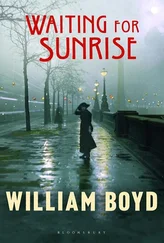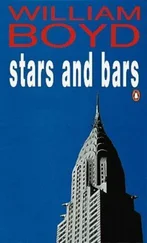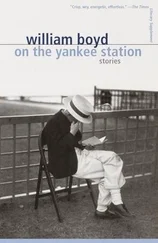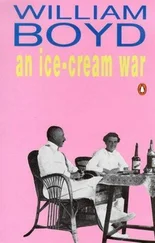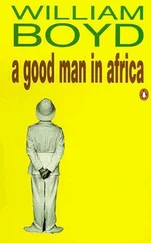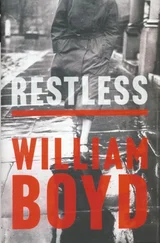By contrast, my photo of the death of Anthony Sasso is mundane in the extreme. He has just been hit in the body by a bullet and his face, for a split second, instinctively registers the shock and the realisation. The jolt of the bullet’s impact has brought him slightly more erect and his helmet strap is flung forward by the momentary arrest in his run. I discovered later that the bullet entered under his right armpit and tore through his chest cavity. He was dead by the time he hit the ground, half a second later. And I was there. My follow-up photo of his comrades gathered round his body is overexposed and blurry (I was in shock) but it is authentic. Capa’s follow-up shot just adds more queries. The body has been moved. The background is slightly different. Too many anomalies.
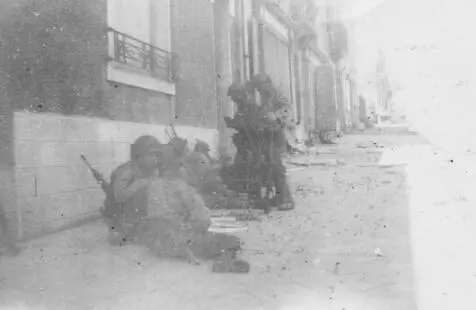
GIs tend to the fallen body of Anthony Sasso. Villeforte, 15 November 1944.
The key fact that I remember about Sasso’s death is that he just fell forward, crumpled forward. He didn’t cry or scream or throw his arms out wide, he just went down. I remember asking a veteran of the First World War — an old comrade of my father — who had seen dozens of men shot alongside him during attacks on the German line what happened at the moment of bullet impact and death. ‘They just fall forward,’ he said. ‘Don’t make a sound. Thump. They just go down like a sack of potatoes.’ That’s what happened with Anthony Sasso. Thump. Dead.
*
I spent the Christmas and New Year of 1944–5 with Charbonneau at the Mas d’Epines where we had made some rudimentary improvements. Rooms had been painted; there was a functioning outdoor lavatory. We had installed a wood-burning stove and range in the kitchen that also heated water so baths could be had (with some effort). There was still no electricity and it was a cold winter of iron frosts, that year, even in Provence. We built great log fires in the main room that we kept going all day, burning vast amounts of wood, until we went — usually drunkenly — to bed.
It turned out to be the longest sustained period that Charbonneau and I had spent together, as a couple living under the same roof, and the time passed agreeably smoothly. The house and its setting helped — even in winter the place was beautiful — but the key factor in our mutual pleasure was that we enjoyed each other’s company, which, banal though it may seem, is the fundamental explanation of any successful and enduring union. Charbonneau was an interesting, amusing and provocative man and I like to think he brought out the best in me, also. Even two minutes in his company provided some comment or observation that would make me laugh or make me violently disagree with him and so those two minutes of my day were well spent as a consequence.
I remember he said he was going to write a memoir of his time in the glittering literary circles in Paris before the war and call it Lettres et le néon. He found this extremely funny and chuckled away to himself. I didn’t understand at all until he said it would make Jean-Paul Sartre very angry — then I got the pun. I asked him if he’d ever read L’Être et le néant and he said he’d tried. What did you think of it, I asked? ‘Ça ne vaut pas tripette ,’ he said. What’s ‘ tripette’ , I asked? ‘It’s tripe,’ he said. ‘It’s not worth little bits of tripe.’ Oh, yes, I replied — in English when something’s really bad we call it tripe, as well. Well, he said, L’Être et le néant is tripe. Then he smiled. ‘Tripe à la mode de con ,’ he said — and found this even funnier, laughing out loud at his sally. He chortled away for days. I had no idea what he was talking about.
I made the mistake once of telling him how clever and funny I found him (we were in bed and I was feeling indulgent) and he replied, with annoying self-satisfaction, ‘Now you understand why beautiful women enjoy the company of clever ugly men. On s’amuse. ’ Then he corrected himself. ‘Clever ugly poor men. We all know why beautiful women like ugly rich men.’ Then he smiled at me. ‘And if we’re not amused by life we might as well take our cyanide pill now — no?’
My new assignment arrived in February 1945. It was to General Bill Simpson’s 9th US Army, poised in the Rhineland waiting to cross the great symbolic fluvial barrier that would lead the Allied armies into the heart of Germany and bring about its cardiac arrest. I made my way to join the 9th, and was flown up to Geldern, about five miles west of the river.
We journalists and photographers, the radio reporters and the newsreel cameramen attached to the 9th Army — there were a dozen of us — were billeted in a semi-ruined town hall in a village north of Rheinberg. There were three PROs looking after us — a measure of how the army and the mass media were now coexisting and being mutually supportive. Everybody was learning fast.
Bill Simpson’s Army Corps was at the southern end of the massive British and Canadian thrust across the Rhine, Operation Plunder. We heard the artillery barrage begin on 23 March and waited until our time came to be ferried up to the front to see what had happened. To be honest, I was beginning to tire of being herded and controlled by the PROs. At some briefing I met Mary Poundstone again and asked her what unit she was attached to. ‘I’m not attached to a unit, my dear, I’m attached to a general. It makes all the difference.’ She was having an affair with Lieutenant General Edson Carnegie. If she needed a plane to return to Paris a plane was provided. If she wanted to rove the Allied front unchecked she did so. If she found herself in trouble she simply called Carnegie so she could be extricated without fuss or demanded transport back to his headquarters. It wasn’t an option open to me.
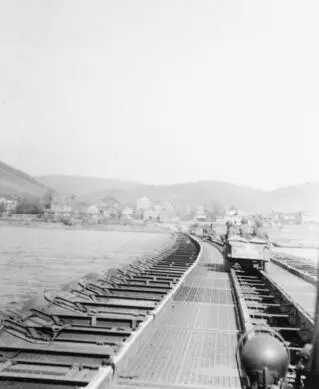
My crossing of the Rhine in the aftermath of Operation Plunder, March 1945.
Thirty-six hours after Plunder had begun we were driven up to the Rhine. It was at least 500 yards wide where we crossed on a Bailey bridge — already constructed — and we were duly impressed.
Once over, the mood was jubilant amongst the troops we encountered. The war, it seemed, was nearly at an end. Thousands of German prisoners were being shepherded back to holding pens and it was both striking and disturbing to see how young they were — teenagers in the main, wispy adolescent fuzz on their chins and cheeks, all in uniforms that seemed far too large for them, borrowed from men.
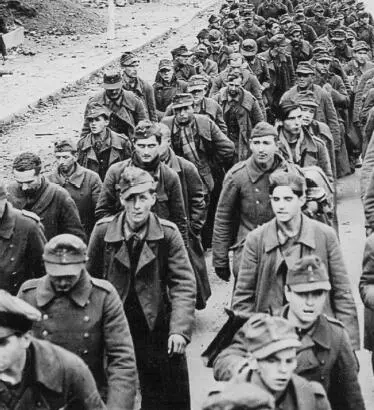
German POWs, March 1945.
We were shown to our billets in an intact farmhouse a mile or so from the town of Wesel. Wesel had been bombed flat on the night of 23 March before it was taken and secured by the British 1st Commando Brigade. Our PRO told us that we were on no account to go near the town as it was still being searched for snipers and crazed last-stand defenders. It sounded exactly the sort of place I should visit.
I bribed a motorcycle courier (sixty cigarettes) to take me to Wesel as his pillion passenger. He dropped me off at a lorry park and I hitched another ride in a four-ton, six-wheeled flat-nosed truck delivering various types of ammunition to the forces in the town. I jumped out when we stopped in the centre and slipped on my ‘PRESS’ armband. The air was full of the choking smell of masonry dust and only Wesel’s cathedral seemed to have partially survived the carpet-bombing — insofar as it could still just be recognised as a church of some sort. Every other building was a shell, a few walls standing, teetering, roofless, girdled with banks of broken bricks and shattered stonework.
Читать дальше





